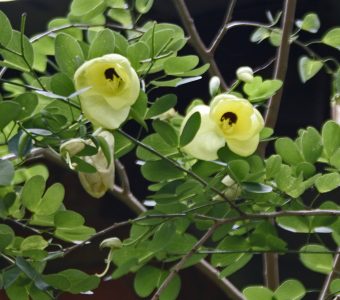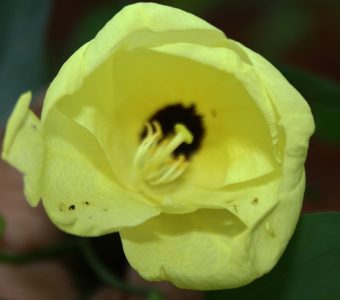

Botanical Name: Bauhinia tomentosa N. E. Br.
Synonym: B. punctata Bolle
Common Name: Yellow Tree Bauhinia
Plant Family: Caesalpinaceae
Origin: Southern Africa
References: Coates Palgrave, p.336, Venter p.284. S.A. No. 208,1, Zimb. No. 264
Description: An attractive evergreen shrub or small tree, with straight to drooping branches. B. tomentosa is easily identified by its delicate small 2-lobed camel foot leaves, resembling butterfly wings. Often forms part of riverine thicket, forest edges, woodland and common in South Africa’s coastal dune bush.
Features of Particular Interest: The large, bell-shaped, drooping, solitary yellow flowers of B. tomentosa are beautiful and distinctive. The peals have a maroon patch at the base. The flowers attract pollinating insects that in turn bring in insectivorous birds.
Height and Spread: 3 – 8m, spread 2-5m.
Periods of Interest:
Leaf: All year round.
Flowering: November to March.
Fruiting: February to May.
Cultivation
Soil and Moisture: B. tomentosa prefers light, well-drained soils with plenty of compost added.
Aspect: Plant in full sun or light, partial shade.
Hardiness: Can withstand light frost, but should be protected when young and is somewhat drought hardy.
Maintenance and Pruning: Prune once a year to encourage flowering during winter and to keep it in shape.
Propagation: Grows easily from seed. It is best to immerse seed in hot water and leave overnight. Young plants grow fast.
Problems and Drawbacks: Can get straggly if not pruned.
Use and Associated Planting: Long straight branches have been used for various purposes such as basket weaving and rafter for huts. B. tomentosa can be effectively used as a screen and hedge, and is also useful in a shrubbery. It is ideal for a small garden. Its root system is non aggressive, and can be planted close to swimming pools and paving. B. tomentosa is a good bonsai subject.
